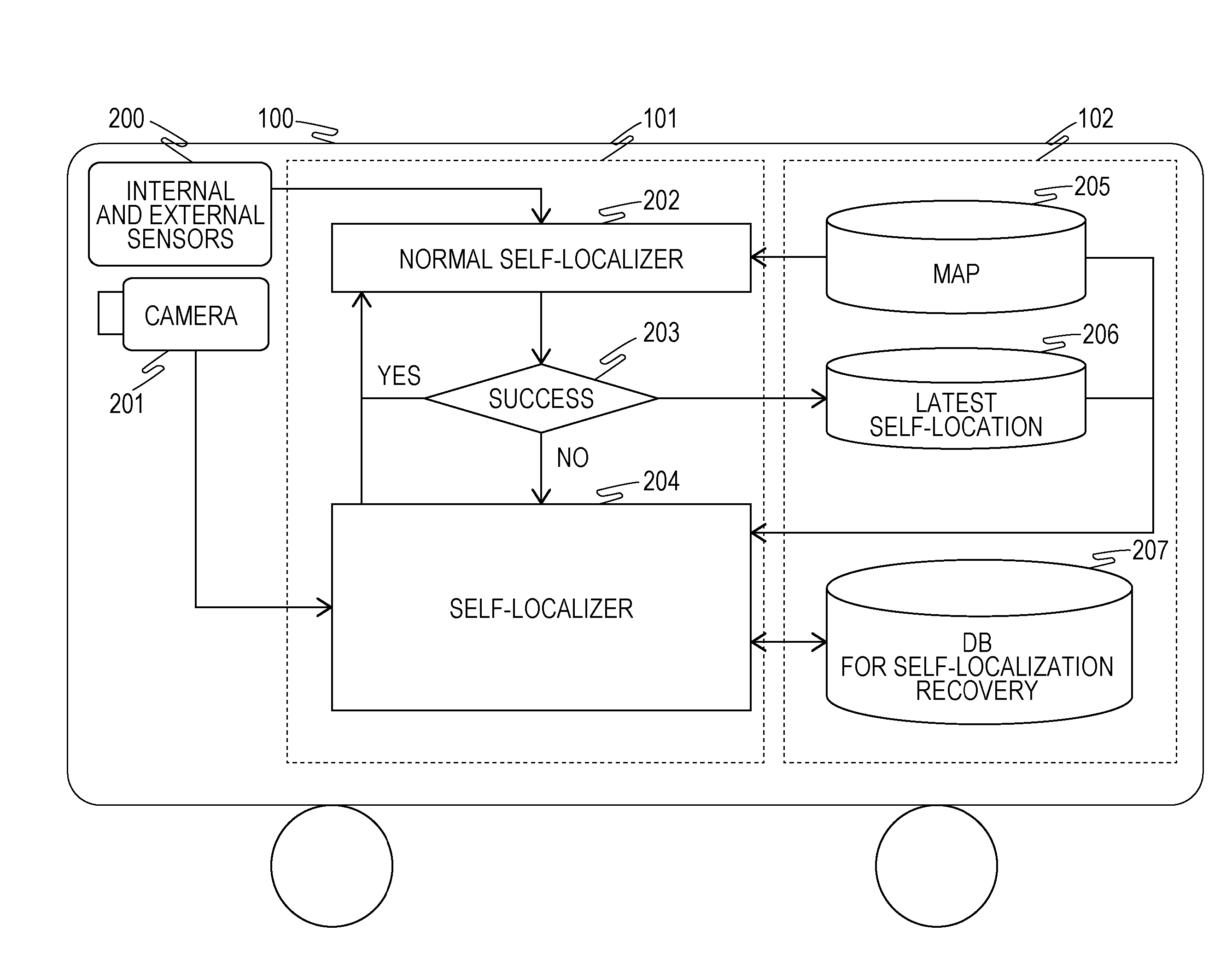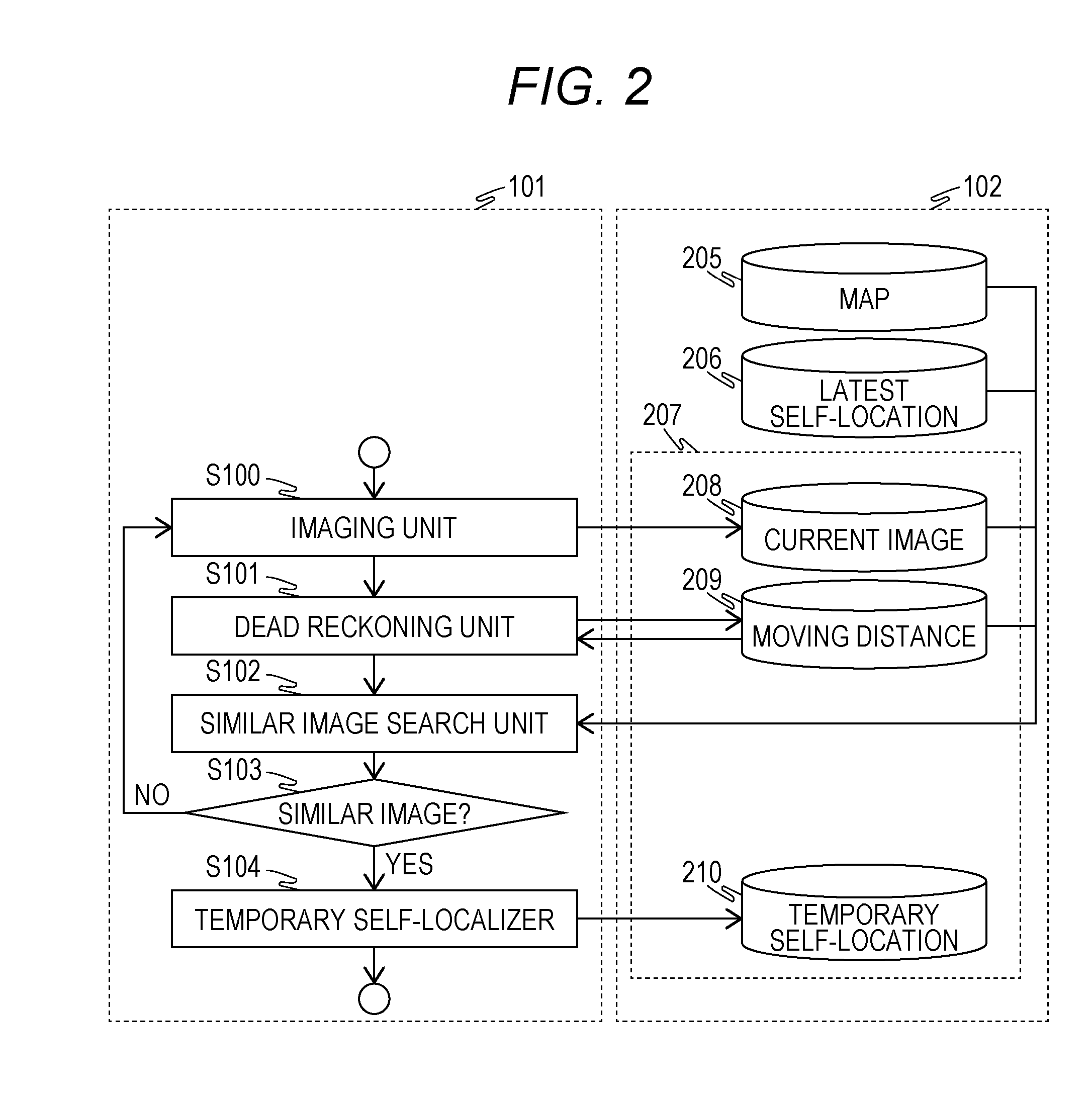Self-Localization Device and Movable Body
a self-localization and movable body technology, applied in image analysis, image enhancement, instruments, etc., can solve the problems of reducing map matching accuracy, affecting so as to inhibit an increase in processing load and improve the accuracy of self-localization
- Summary
- Abstract
- Description
- Claims
- Application Information
AI Technical Summary
Benefits of technology
Problems solved by technology
Method used
Image
Examples
example 1
[0024]In the present example, a movable body such as a vehicle or a robot that self-localizes is mounted with a camera and when the self-location is lost, recovers from a state in which the self-location is lost by a self-localization device according to the present invention.
[0025]FIG. 1 shows the configuration of a movable body 100 according to the present example and the movable body 100 is mounted with an internal and external sensor 200 and a camera 201 used by a self-localization device according to the present invention and further, a CPU 101 and a storage device 102. In FIG. 1, a normal self-localizer 202 and a self-localizer 204 as programs executed by the CPU 101 are shown as a function block diagram.
[0026]The internal and external sensor 200 is a sensor needed for a self-localization technique performed by the normal self-localizer 202 described below such as a rotary encoder, a gyro sensor, and an inertial measurement unit (IMU) to perform dead reckoning, a laser distanc...
PUM
 Login to View More
Login to View More Abstract
Description
Claims
Application Information
 Login to View More
Login to View More - R&D
- Intellectual Property
- Life Sciences
- Materials
- Tech Scout
- Unparalleled Data Quality
- Higher Quality Content
- 60% Fewer Hallucinations
Browse by: Latest US Patents, China's latest patents, Technical Efficacy Thesaurus, Application Domain, Technology Topic, Popular Technical Reports.
© 2025 PatSnap. All rights reserved.Legal|Privacy policy|Modern Slavery Act Transparency Statement|Sitemap|About US| Contact US: help@patsnap.com



